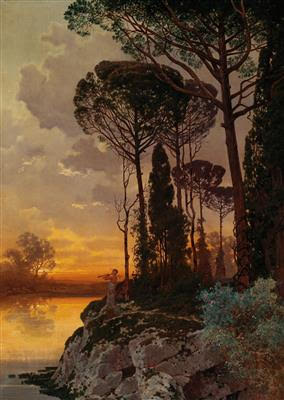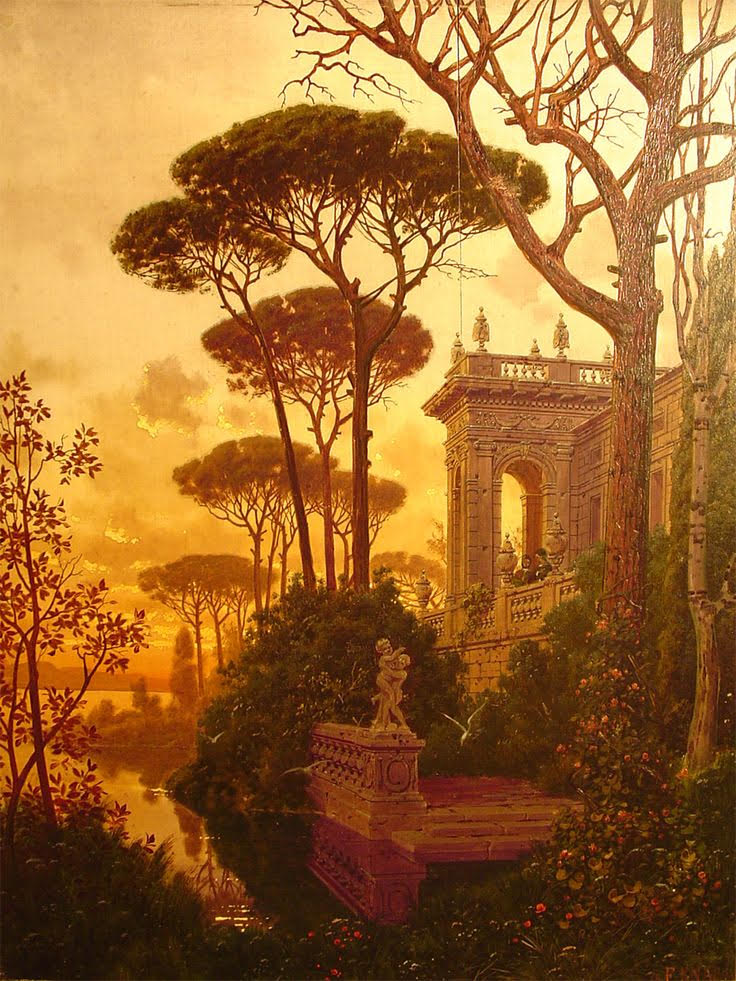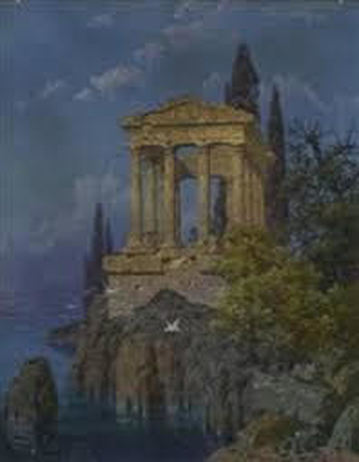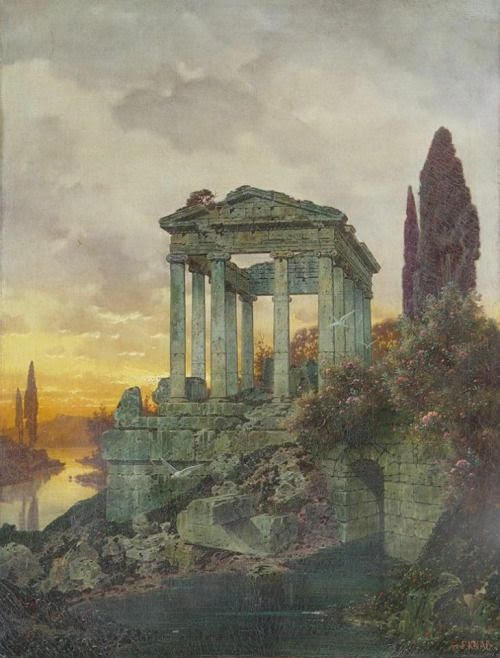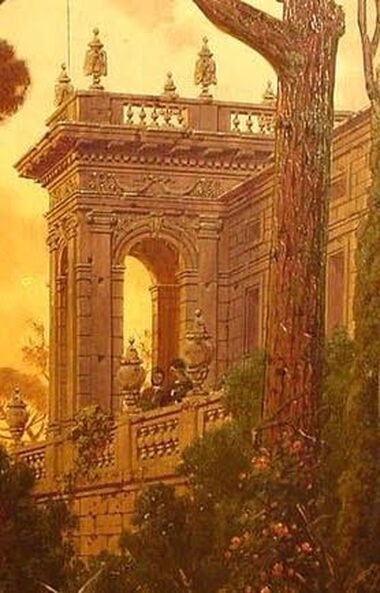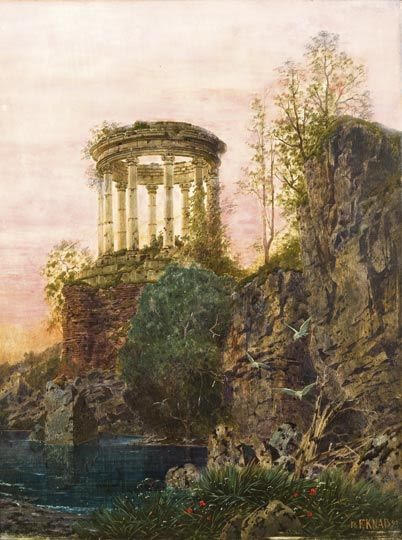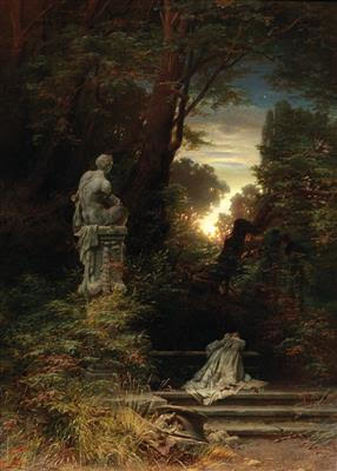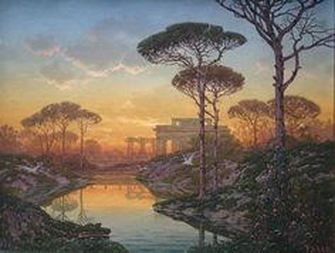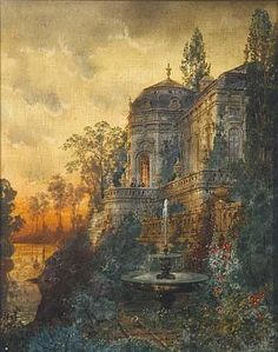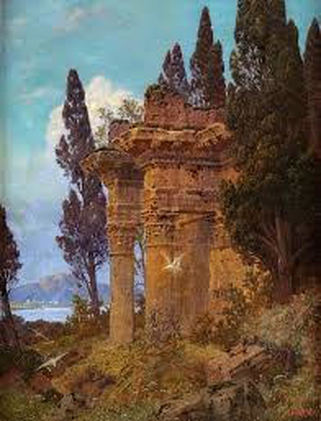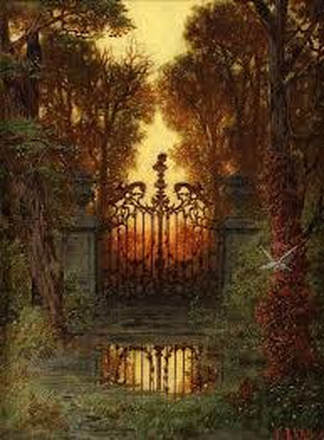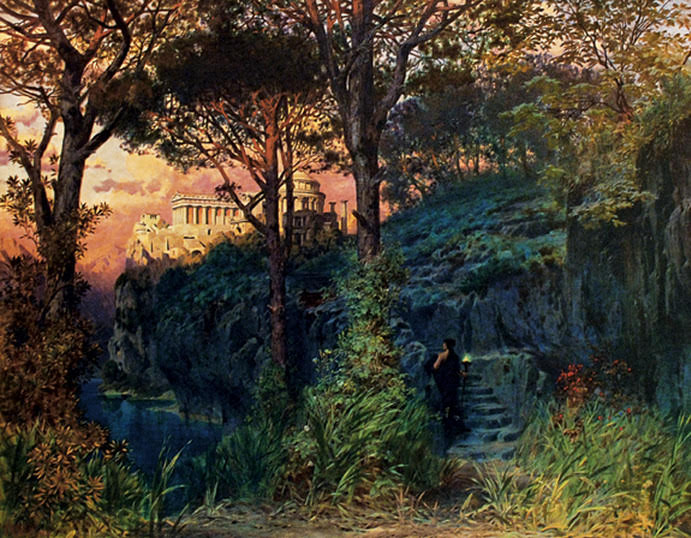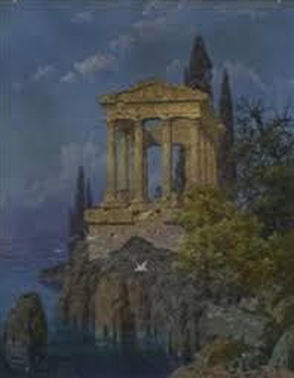On Ferdinand Knab's Remarkable Artistry:
Master of Glaucous Hues - Elusive Neutral Shades That Defy Classification:
Master of Glaucous Hues - Elusive Neutral Shades That Defy Classification:
I have my favorite landscapes artists, whose realism and understanding of light could win the highest praises. Their realism, nevertheless, is said to be too photographic, and soon it is demoted as no better than photos with high definition.
Ferdinand Knab, on the other hand, was so serious a thinker as was Immanuel Kant in his Categorical Imperatives, or Johann Sebastian Bach when spinning endless fugues and preludes through the rigor of compositional engineering, aesthetic sensibilities, ecstatic contemplation --the inexplicable fingerprints of the human soul-- as lived and cherished in the different moments of our existence.
Light is for a landscape what is brilliance to a gifted mind, and when I first came across Ferdinand Knab's stunning canvases, the inner effects could be compared of St. Paul's epiphany on his way to Damascus.
Ferdinand Knab, on the other hand, was so serious a thinker as was Immanuel Kant in his Categorical Imperatives, or Johann Sebastian Bach when spinning endless fugues and preludes through the rigor of compositional engineering, aesthetic sensibilities, ecstatic contemplation --the inexplicable fingerprints of the human soul-- as lived and cherished in the different moments of our existence.
Light is for a landscape what is brilliance to a gifted mind, and when I first came across Ferdinand Knab's stunning canvases, the inner effects could be compared of St. Paul's epiphany on his way to Damascus.
There are the shades which defy classification, i.e., neutral grays, neutral tints appearing to be colorless, but let there be "buffs and mauves" in the dusk of our lives!
Upon a warm imprimatura, F. Knab would then apply his cool scheme of negative colors, neutral colors, "glaucous hues," buff and dark-greened hues as found in nature, are thus wizardly treated as to evade any clear categorization within the "cognitive bracketing of the primary color yellow, blue, red, brown."
How to create neutral shades without sullying or muddying their purity?
At this phase, the scene would look rather gloomy, lifeless, even sad, but this is the other side of the Canvas of Life, "the negative, the contrast, "the neutral zone," upon which the blessed master would then revel in cheerful celebrations of the positive colors!
It is to be observed that most amateurs and dilettantes would remain brilliant colorists at the primary level. Working with neutral shades would require a higher intellect, because over-mixing colors could simply kill the beauty and purity of the secondary hues.
Bathing the Horizon with Glorious Light!
His lightening effects are not only atmospheric, but extremely beautiful, natural, nay, idealized in the happy coincidences and communion of the elements.
It is to be observed that most amateurs and dilettantes would remain brilliant colorists at the primary level. Working with neutral shades would require a higher intellect, because over-mixing colors could simply kill the beauty and purity of the secondary hues.
Bathing the Horizon with Glorious Light!
His lightening effects are not only atmospheric, but extremely beautiful, natural, nay, idealized in the happy coincidences and communion of the elements.
Likewise amazing was his astonishing knowledge of Greco-Roman stone-structures, architraves, columns, temples, et al., whose friezes are artfully embossed with human figures demanding high knowledge of Anatomy and Proportion.
Ferdinand Knab's beautiful landscapes could be compared to Thomas Kinkade's, unspoiled by the pervasive distractions of the social media and publicity. Knab, like American artist, Frederick Church, understood lightning effects with great naturalism, but his remarkable knowledge of Greco-Roman architecture, could challenge the oeuvre of the Hudson River School in America, with the exception of Thomas Cole (e.g., The Course of Empire).
We don't know how great is an artist or a writer, but only after we have grown sick of our times. Once the debris of nihilism has finally settled, "tranquila está la tormenta mi amigo del alma," we may then come to see these strange books' titles, reserved for those of kindred nature, beautiful paintings, beautiful souls somehow preserved for posterity.
We don't know how great is an artist or a writer, but only after we have grown sick of our times. Once the debris of nihilism has finally settled, "tranquila está la tormenta mi amigo del alma," we may then come to see these strange books' titles, reserved for those of kindred nature, beautiful paintings, beautiful souls somehow preserved for posterity.
Ferdinand Knab's beautiful mind could make me thank God for this blessed man of peace.
Que hora de la madrugada tan linda!!!
Que hora de la madrugada tan linda!!!
The canvases of Ferdinand Knab are so superior to anything I have seen by the latest painters of the last century, that I am still training my mind and heart to beholding life through the Divine Eye of a Great Artist!
His lovely stream, like a sheet of glass, may reflect the serene heaven of his beautiful mind:
His lovely stream, like a sheet of glass, may reflect the serene heaven of his beautiful mind:
It is a placid journey through subtlest neutral shades betwixt peace and joy. Here and there, every nook and cranny, "glaucous," buff, dark-greened areas, galore, but scarcely tinted with delicate warmhearted hues as soothing as they are up-lifting.
Buff, Glaucous Hues Are Tad Doses of Well-being:
Buff, Glaucous Hues Are Tad Doses of Well-being:
It is obvious that he had the serious training for the greatest possible accuracy, but to paint dreamscapes like this master, we would need a good heart, whence splendid streams may bathe our mind with the most agreeable feelings of forgiveness, inspiration and well being.
Everything seems to partake of the surrounding atmosphere, and its calmness is simply timeless, spiritual and ideal for a mind seeking illumination, transcendence and a new dawn in the renovation of our faculties.
The Roman Castle at Sunset, Dated 1876, Oil On Canvas, 40.5" x 52.5 " by Ferdinand Knab
Why are Ferdinand Knab's paintings worth so little when compared to other landscape artists?
Because by the turn of the Twentieth Century, photo-realism compromised the School of Realism, and with the far-reaching devastating consequences, brought about by the tidal waves of First and Second War World, the art-world establishment, which is wrapped-up in the collective psyche of a people's awful remembrance of wars...so demoralized by those who once advocated a return to the greatness of Ancient Greece, the masses of F. Nietzsche became hysterical on any sublime depiction, any divine representation, any ecstatic contemplation or painter that exalts the value of the individual above the trite scenes of sufferings, or, anything glorious that places the beauty of life and humanity above the negative Canvas of Nihilism.
Mind you, Ferdinand Knab simply sought this sacred union, this nexus with Mother Nature, this interconnectedness between man and his lofty place in the grand Canvas of Existence.
Because by the turn of the Twentieth Century, photo-realism compromised the School of Realism, and with the far-reaching devastating consequences, brought about by the tidal waves of First and Second War World, the art-world establishment, which is wrapped-up in the collective psyche of a people's awful remembrance of wars...so demoralized by those who once advocated a return to the greatness of Ancient Greece, the masses of F. Nietzsche became hysterical on any sublime depiction, any divine representation, any ecstatic contemplation or painter that exalts the value of the individual above the trite scenes of sufferings, or, anything glorious that places the beauty of life and humanity above the negative Canvas of Nihilism.
Mind you, Ferdinand Knab simply sought this sacred union, this nexus with Mother Nature, this interconnectedness between man and his lofty place in the grand Canvas of Existence.
